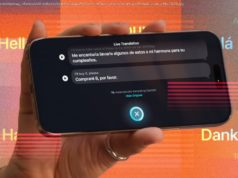Step aside Amazon Alexa – soon you will be able to order Walmart products using Google Assistant.
Corporate giants Walmart and Google are teaming up to enter the voice-shopping market, currently dominated by Amazon.
From next month, US consumers will be able to buy Walmart products using the voice-activated Google Assistant platform on phones and home devices.
Amazon’s AI virtual assistant Alexa already enables users to shop directly from the online retail giant.
The partnership enables Walmart to challenge Amazon’s dominance of the US voice shopping market .
Walmart’s head of e-commerce Marc Lore wrote in a blog post that the retailer plans to expand the use of voice-activated shopping across its 4,700 stores to “create customer experiences that don’t currently exist within voice shopping anywhere else”.
For example, Walmart, which owns the UK’s Asda supermarket, could offer consumers the choice of picking up an order in store at a discount, or enable users to use voice shopping to purchase fresh groceries across the country.
Hundreds of thousands of products will be available.
Amazon has long challenged brick-and-mortar retailers by offering items at cheaper prices, often with free delivery.
Even though most retailers now have their own online stores, Amazon continues to dominate online sales, and the threat has only increased with its forays into same-day delivery and artificial intelligence-based voice shopping.
Google has been offering high street retailers a way to fight back by offering their products on its Google Express online shopping mall.
Walmart will be offering the most items of any retailer on the Google Express platform. All users must do is link their Walmart accounts to Google Express.
Tesco to start same-day delivery across UK
Asda reveals 2016 slump in sales
Amazon accuses Walmart of being a bully
Miriam Burt, a research vice president in retail at Gartner, said that the move is not just about revenue or technology, but more about making customers’ lives easier.
“We need to watch the cohort of customers that’s starting to grow around this, particularly Gen Z, which is anyone born after 1995, who are highly influential, ” Ms Burt told the BBC. “They’re very much into conversational commerce, through instant messengers like WhatsApp, Facedook Messenger and WeChat.
“If you translate that into this, shopping is very convenient for them with voice activation. But whatever way you interact with the retailer, it has to be a really good customer experience from start to finish. If parts of that experience are bad, it will be very hard for the customer to be loyal.”
Walmart has been making a gradual march onto Amazon’s turf.
In April, Amazon expanded the Prime Now same-day delivery service to include certain items like food and medicines. Now Walmart has teamed up with ride-hailing app Uber to offer online grocery deliveries in six states.
In June, Amazon accused Walmart of “bullying” its technology suppliers into shunning Amazon’s cloud computing service .
Walmart has also challenged Amazon by offering discounts to customers who buy online and pick up in-store, and free two-day shipping for purchases of $35 or more. The latter move prompted Amazon to lower its own threshold for free shipping in order to stay competitive.
Over the past two years, Amazon has been making an increasing play for offline bricks-and-mortar shops – from the physical book shop Amazon Books, launched in Seattle in 2015, to its ongoing acquisition of the organic food chain Whole Foods .
Amazon also has a grocery delivery deal in the UK with Morrisons supermarket.






